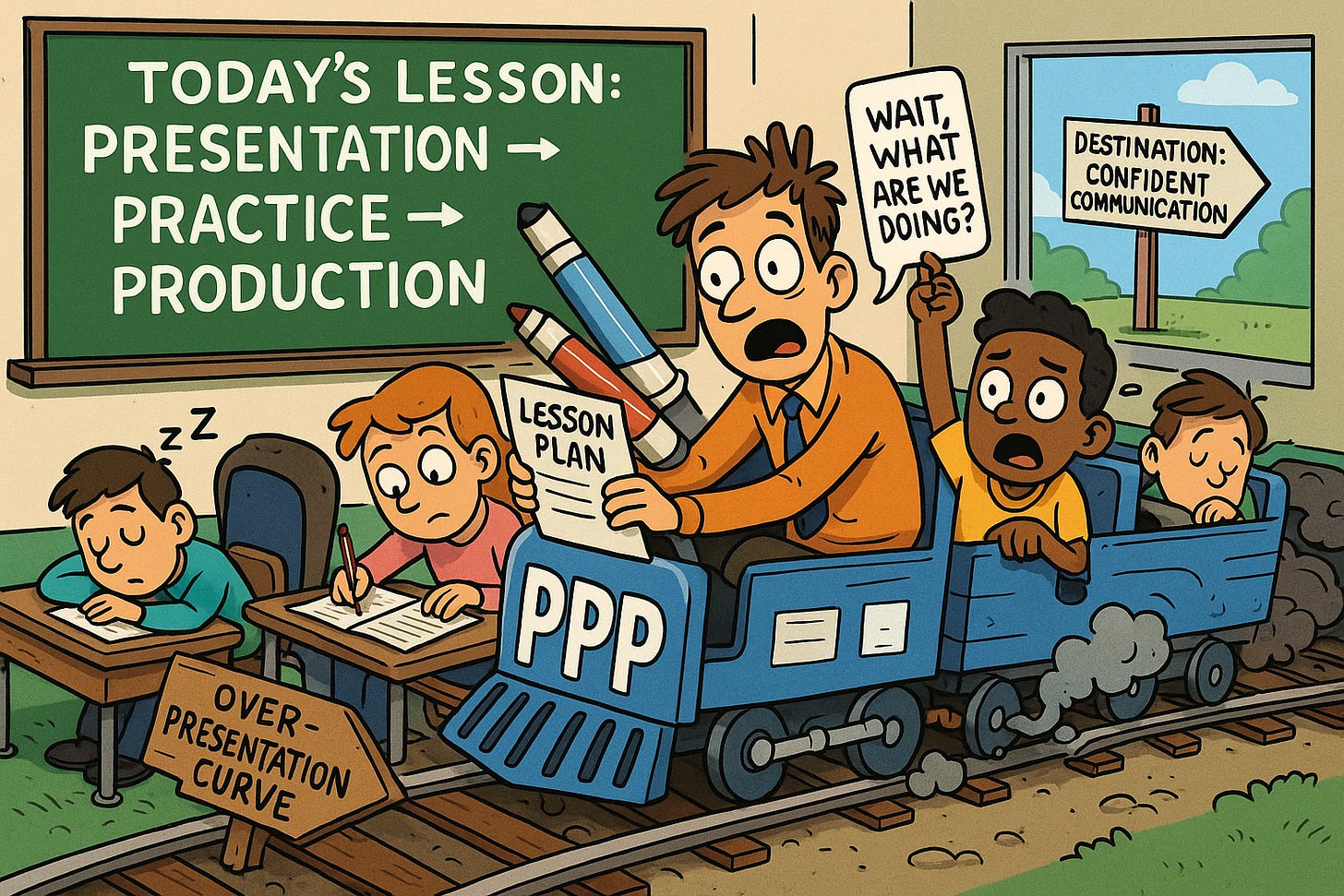Presentation, Practice, Production Common Mistakes
PPP isn't broken - it's just not used to its full potential.
PPP isn’t broken, just often misused.
You plan your lessons. You follow the framework. And yet - students glaze over halfway through, or you run out of time before they’ve really used the language.
Sound familiar?
PPP has structure, but it also has traps. And it’s these hidden missteps - timing, flow, feedback - can trip up even experienced teachers.
The good news? They’re easy to fix once you know what to look for.
This article will walk you through the common pitfalls, the quick wins, and leave you with a PPP Pitfall Checklist to audit your next plan.
What is PPP?
PPP boils down to Presentation, Practice and Production (see my last article!), a tidy three-step path that moves learners from first use to being confident with the target language.
Why PPP is (still) valuable
Used with intention, PPP still earns its spot because it gives new teachers a useful, easy to use model that matches with most coursebooks and keeps lesson aims crystal clear.
I've seen newer teachers thrive using PPP because it boosts their confidence rather than struggle with more complicated frameworks too soon.
Where PPP can go wrong (it’s not your fault)
Common problems with PPP often stem from systemic traps, not personal failings:
Talking too much: Teacher monologue in presentation with zero elicitation or context.
No meaning: Mechanical drills disconnected from meaning.
Timing is off: A rushed role-play or speaking activity squeezed into the last few minutes.
No flexibility: Ignoring classroom dynamics and sticking rigidly to the plan.
PPP, step-by-step, minus the mistakes
Keeping PPP effective begins by clearly stating an observable lesson aim. For instance, when teaching students how to ask for directions, your lesson aim could be: “By the end of the lesson, learners will be better able to ask and give directions in town.”
Next, introduce a short, engaging scenario that immediately captures students' attention. You might describe a situation where students are tourists in a new city, looking to find popular landmarks that they might enjoy (Boba shop, or the arcades!).
In the Presentation stage, spend no more than five minutes quickly eliciting, modelling, and clarifying the target language. You could demonstrate by asking a student, "Excuse me, how do I get to the nightclub?" and model the correct response clearly and concisely.
Then, move into Practice, starting with mechanical drills such as repeating phrases and gradually progressing to more meaningful practice, like students directing each other using maps
Throughout the practice, actively monitor students' performance and immediately address mistakes. Provide targeted support to students struggling with correct phrasing or pronunciation, reinforcing accurate language use.
Ensure the Production phase is a genuinely communicative task, such as a role-play where pairs of students act out scenarios asking and giving directions to different locations.
Finally, end the lesson with a quick reflection on what they’ve achieved
If you liked this article, you’ll love my books:
📝 Lesson Planning for Language Teachers - Plan better, faster, and stress-free.
👩🎓 Essential Classroom Management - Develop calm students and a classroom full of learning.
🏰 Storytelling for Language Teachers - Use the power of storytelling to transform your lessons.
🤖 ChatGPT for Language Teacher 2025 - A collection of AI prompts and techniques to work better, faster.
💭 Reflective Teaching Practice Journal - Improve your teaching in five minutes daily.



